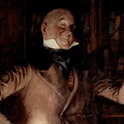So Maurice Glasman, architect of Blue Labour, thinks his ideas can become as influential in the Labour party as the Institute of Economic Affairs was for the Tories in the 1970s (see “The next big thing?” by David Goodhart). That is no modest claim. In his History of Modern Britain, Andrew Marr declares the IEA “undoubtedly the most influential think tank in modern British history.” It is true that Glasman’s allies are popping up in interesting places. The Oxford academic Marc Stears is heading an IPPR inquiry into the left’s response to the Big Society, and Glasman’s close friend Duncan Weldon has just become senior policy officer at the TUC. But there is a long way to go. It is also worth recalling how Will Hutton’s stakeholding ideas, similar to Glasman’s in many ways, were flavour of the month on the centre-left in the mid-1990s—only to have virtually no influence when New Labour came to power.
This article appeared in the Diary in the October 2011 issue of Prospect
***
More on Blue Labour in Prospect:
The next big thing? Blue Labour and Red Tory: the age of post-liberalism, by David Goodhart The Prospect debate: Red Tory vs Blue Labour Both Labour and the Conservatives have pledged to “strengthen communities.” But does the state help or hinder that? Maurice Glasman, father of “Blue Labour,” takes on “Red Tory” Phillip Blond
Blue Labour aims big
September 26, 2011

Just how influential is Maurice Glasman?












